All you need to know about Moodboards (Artist friendly)
You may have come across the term Moodboard, especially if you’re into aesthetics, or you’re a frequent Pinterest user. But what is a moodboard really? Why is everyone talking about moodboards? And how could a moodboard serve you as an artist?
Let’s begin with a little definition, and some visuals to help you get familiar with moodboards.
1-What is a Moodboard?
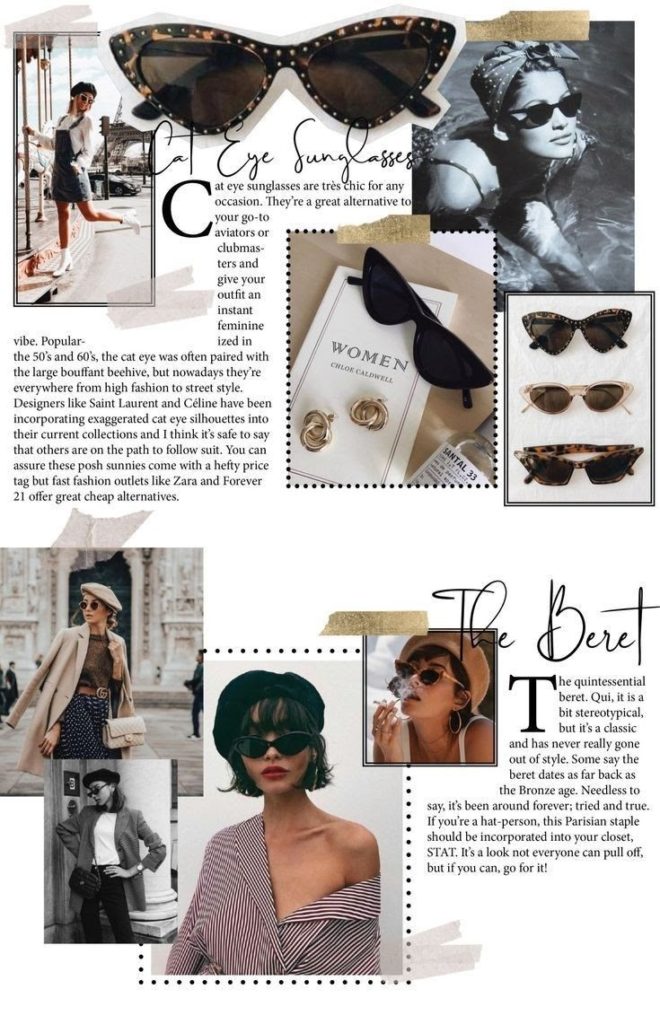
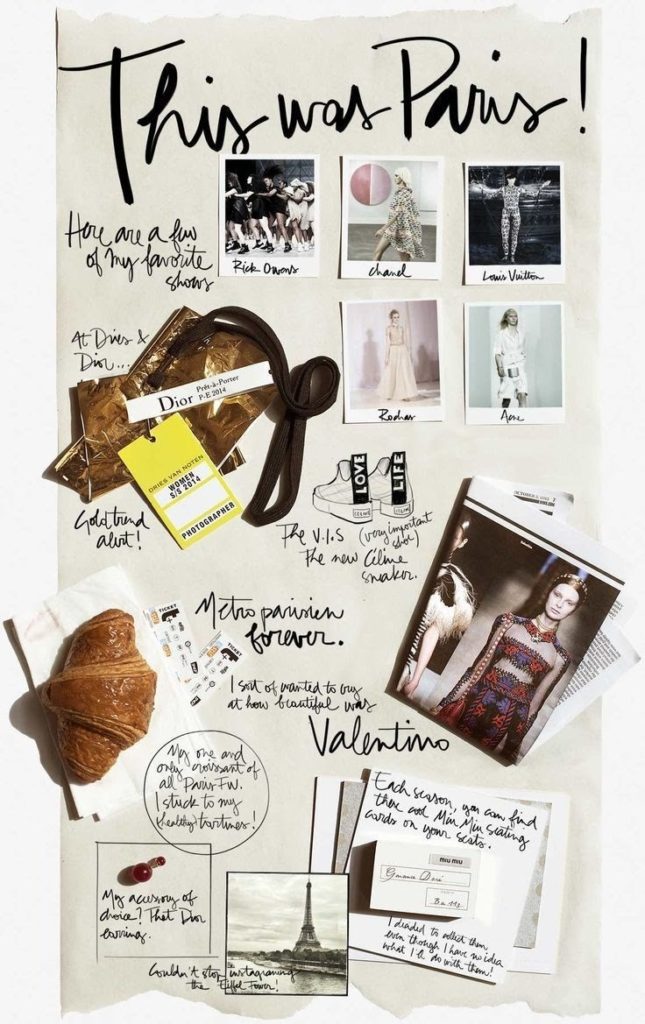

As you can tell from the previous images, a moodboard is a tool serving as a visual display, containing images, colors, texts, and elements of inspiration, in general, to help translate an idea, an experience, or a feeling into tangible material.
Moodboards could be both physical and digital. It really depends on your personal preference.
I personally find physical moodboards to be so much more fun. They also provide a more mindful experience of moodboarding than digital moodboards.
2- How to Moodboard?
Decide first, what’s your vibe? A digital mood board or a physical moodboard?
Let’s begin with Physical Moodboards

You will need :
- Cork board + Pins
- Pictures of you choice
- A chosen color palette (optional)
- Texts / Quotes
- Samples of objects (optional)
How to physical moodboard :
Arrange your elements (pictures, quotes, objects) and move them around the board until the composition makes sense to you.
Your idea should be clear, neat, and aesthetically pleasing as well. Have fun with it!
Let’s move on to Digital Moodboards
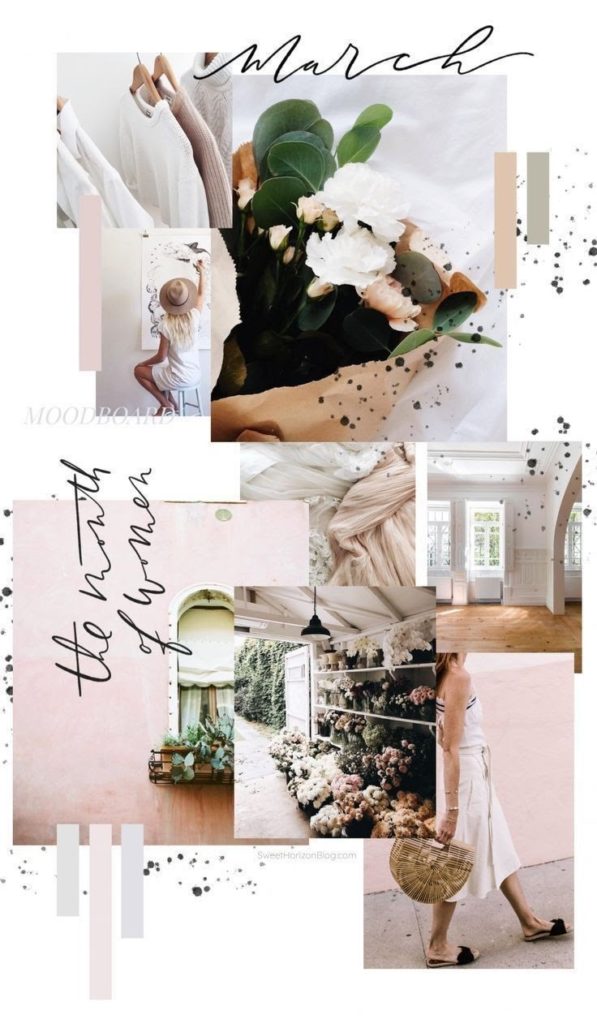
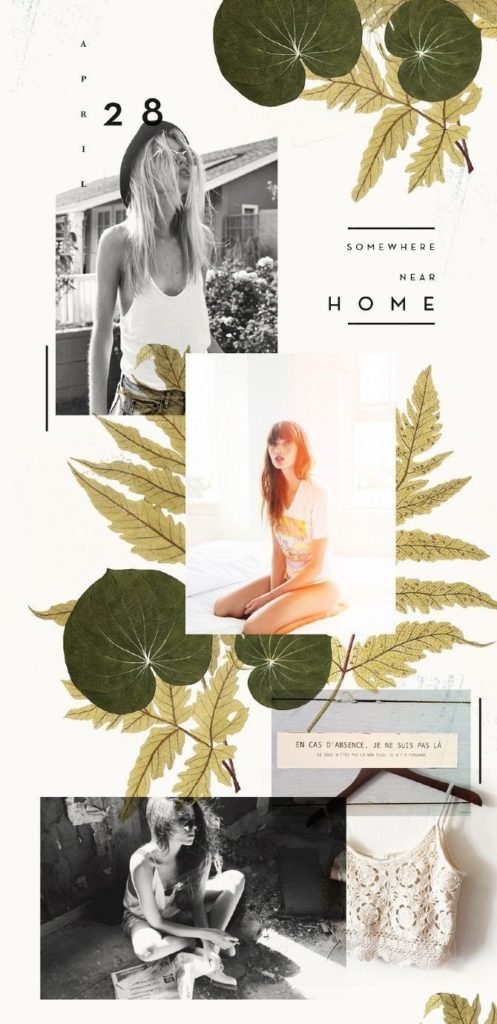

You will need :
- Moodboard Template
You can either create your own on Photoshop or get “ready to use” on Canva.
You just head to canva.com, type Moodboard in the search bar, and choose your favorite template.

- Digital elements of your choice (pictures, digital paintings, color palettes, texts, quotes, etc..)
That’s all you need to bring the idea you have in mind into a visual representation.
3- Why Moodboarding for Artists?
Now that you have an idea of how a moodboard looks and how you can create your own, I’m sure you would love to try it for yourself even if you’re not an artist.
In case you are an artist:
- Moodboards are a great tool to express the vision you have in mind. In dealing with a client, I bet you don’t want to create a whole painting as a sample. Illustrating your idea on a moodboard is easier.
- A Moodboard will cut the process short: Display the elements you are willing to use in your board, your chosen palette, or even shots from your process. As you show your moodboard to your client, they can always re-adjust, remove or add new elements they like to it and thus guide you to do what you both agree on.
- A Moodboard could help you explore and find your style: The best way to learn about the best art style for you is to display it before your eyes.
If you wanna learn more about how to find your art style, click here.
- A Moodboard would boost your creativity: Moving the elements around on the board to create different compositions opens many possibilities.
- A Moodboard is a good starting point to get things done: It will help you collate and focus your ideas, and help to track the process of the project.
You can think of more benefits to having a mood board around. You need it! Trust me!
Additional tip: Vision board or Moodboard as a manifestation
More on the personal side, a vision board is a Moodboard used for the purpose of manifesting life goals and things to achieve. You create a vision board by curating images and quotes that resonate with your vision, to be displayed in a prominent place where you will see them every day.
A survey conducted by TD Bank on 1100 individuals and 500 small business owners revealed that one in five business owners used a vision board to create their business plans. Furthermore, 76% of those had already achieved what they had envisioned using the dream board they originally created. More about the study
Let’s move to two illustrative examples of how a Moodboard turned into a project/product in painting and graphic design:
–In graphic design:
My friend Reda from @made.by.reda shared this Moodboard he had created for this logo.
–In painting:
This was the Mood board I created for this painting :
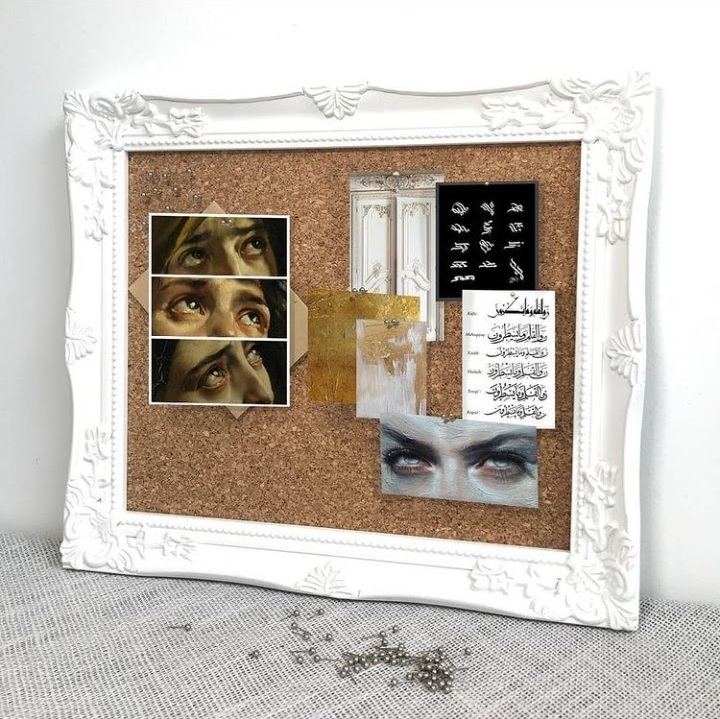
Conclusion:
Moodboards are a great creative tool to display your visions and ideas as a first step in the process of bringing them to life.
Moodboards help you to:
- Smoothly communicate with and understand your clients.
- Express what you have in mind.
- Explore and boost creativity.
- Recall your projects on display and track your progress.
Beyond a defined purpose, moodboards are easy and fun to create. They also add a personalized artistic touch to your space. I highly recommend you try them.
Question: Will you create a Moodboard for your next art project?

4 Comments